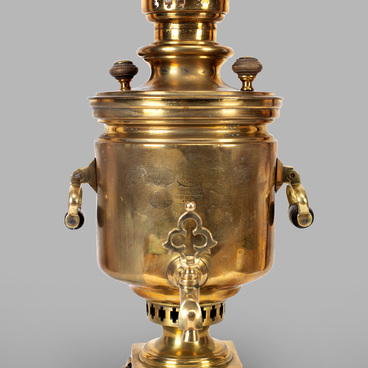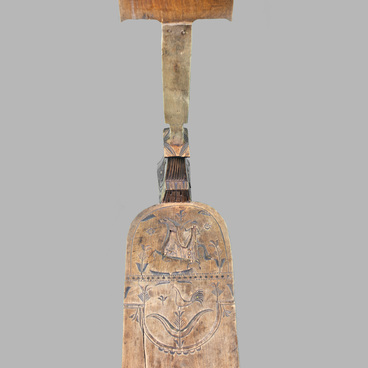The first clothes iron in history was a barely processed heavy flat stone heated on fire. In their cave paintings, the Aztecs depicted in detail the primitive process of ironing clothes: they were spread out on a flat surface, pressed with a stone from above, and kept under pressure. According to another method, wet clothes were simply stretched as much as possible, fixed, and left to dry naturally.
In the 1st century, the ancient Romans used a wooden press for smoothing fabrics. Clothes were placed between two wooden plates, which were pressed against each other with clamps, or the wrinkles were smoothed using a metal hammer. To create folds on their clothes, fashionable women in ancient Greece used special rods and weights. In the 4th century, the Greeks invented a way to pleat their loose linen clothes with a hot metal rod, which was used to roll the clothes like a rolling pin.
In many cultures, housewives used a cast-iron frying pan or a pot with hot coals for ironing. Until the 20th century, the following method was used for smoothing clothes in Russia: the laundry was wound onto a rolling pin and rolled many times with a pralnik. A pralnik, or a rubel, is a long wooden board with carved grooves to soften the fabric.
The Russian word “utyug”, meaning “iron”, was borrowed from a Turkic source no later than the 17th century. Literally, it can be translated as “placing a fire”, because the first irons were heated with the help of open fire or furnaces or filled with hot coals. Spirit irons were invented in Germany in the 19th century. They had a metal reservoir for alcohol which entered the iron through narrow tubes and ignited there. Spirit irons were an important innovation: they were lighter, warmed up quickly, and did not require a stove or fire.
A spirit iron was an expensive device, which is why it did not become popular in Russia. Over two thousand spirit irons were imported to Russia from Europe, but not a single one of them was sold. An inventor from Veliky Novgorod came up with a similar device that used water: a kettle was attached to the iron from above, and the ironing plate was heated by boiling water. The first iron with an electric heater appeared in the late 19th century and weighed about seven kilograms.
In the 1st century, the ancient Romans used a wooden press for smoothing fabrics. Clothes were placed between two wooden plates, which were pressed against each other with clamps, or the wrinkles were smoothed using a metal hammer. To create folds on their clothes, fashionable women in ancient Greece used special rods and weights. In the 4th century, the Greeks invented a way to pleat their loose linen clothes with a hot metal rod, which was used to roll the clothes like a rolling pin.
In many cultures, housewives used a cast-iron frying pan or a pot with hot coals for ironing. Until the 20th century, the following method was used for smoothing clothes in Russia: the laundry was wound onto a rolling pin and rolled many times with a pralnik. A pralnik, or a rubel, is a long wooden board with carved grooves to soften the fabric.
The Russian word “utyug”, meaning “iron”, was borrowed from a Turkic source no later than the 17th century. Literally, it can be translated as “placing a fire”, because the first irons were heated with the help of open fire or furnaces or filled with hot coals. Spirit irons were invented in Germany in the 19th century. They had a metal reservoir for alcohol which entered the iron through narrow tubes and ignited there. Spirit irons were an important innovation: they were lighter, warmed up quickly, and did not require a stove or fire.
A spirit iron was an expensive device, which is why it did not become popular in Russia. Over two thousand spirit irons were imported to Russia from Europe, but not a single one of them was sold. An inventor from Veliky Novgorod came up with a similar device that used water: a kettle was attached to the iron from above, and the ironing plate was heated by boiling water. The first iron with an electric heater appeared in the late 19th century and weighed about seven kilograms.





